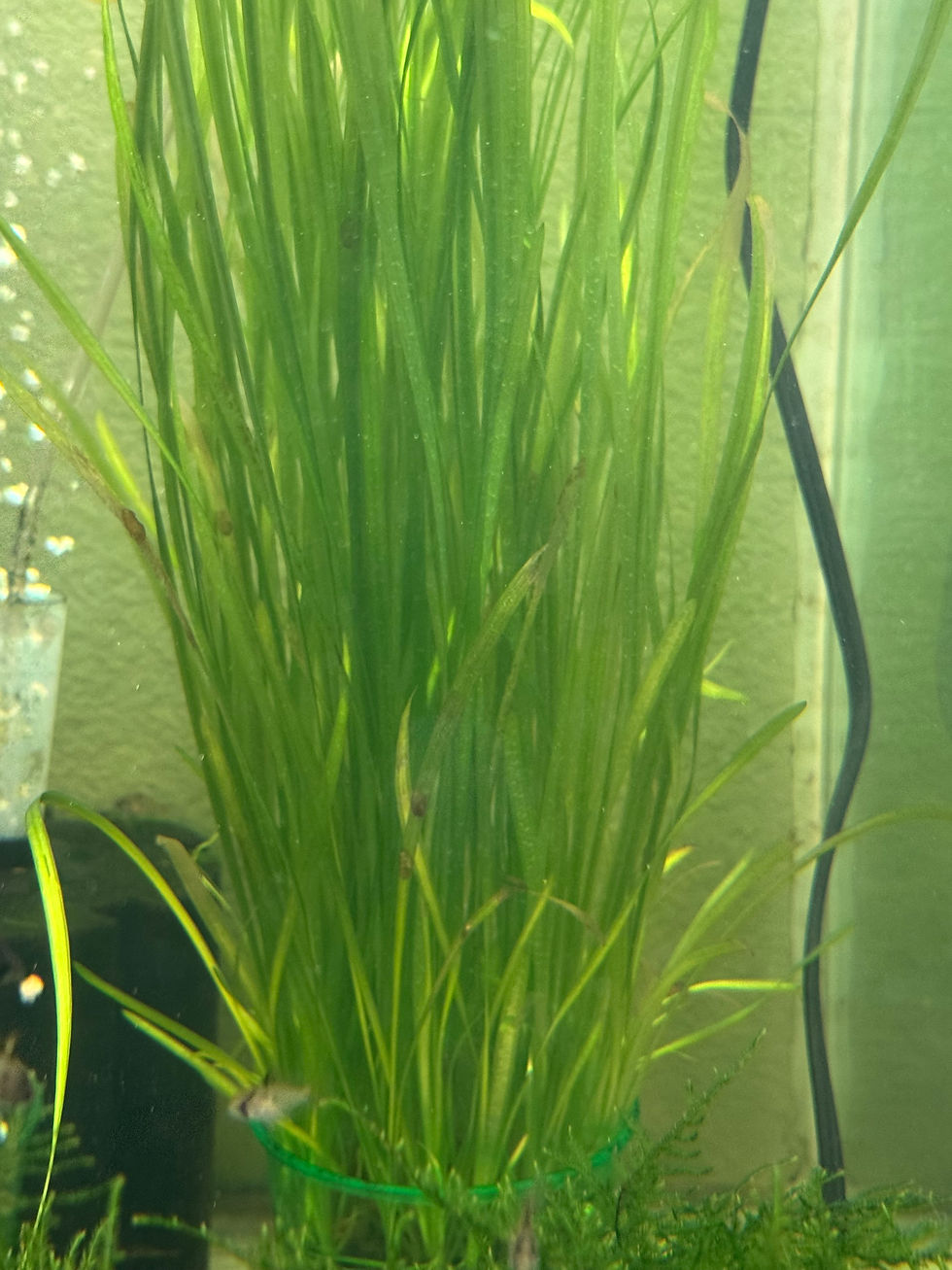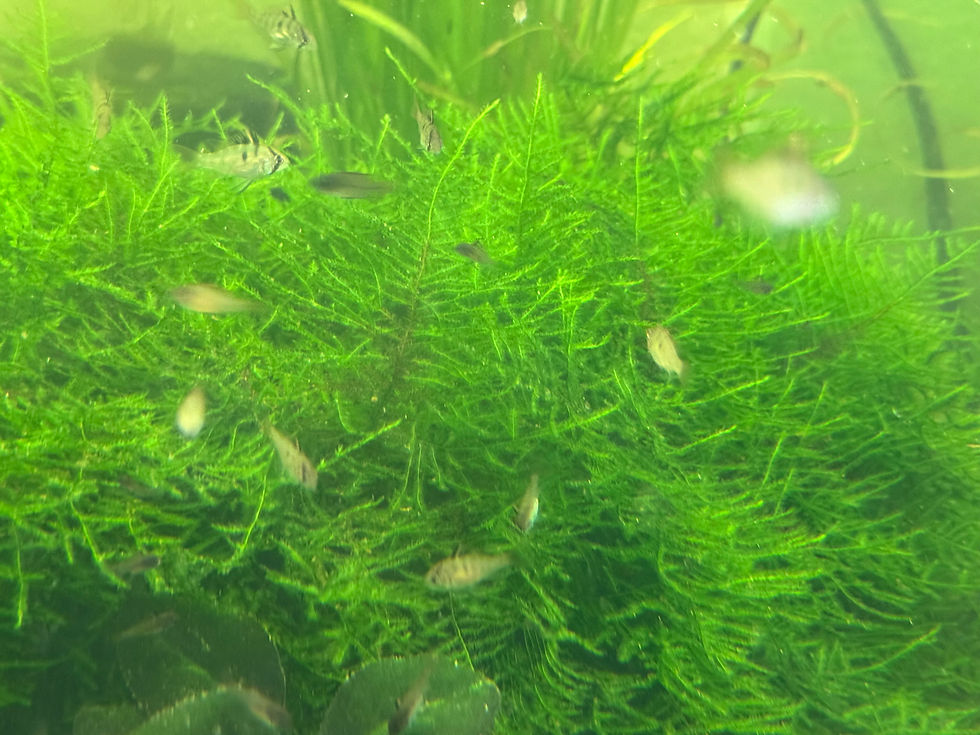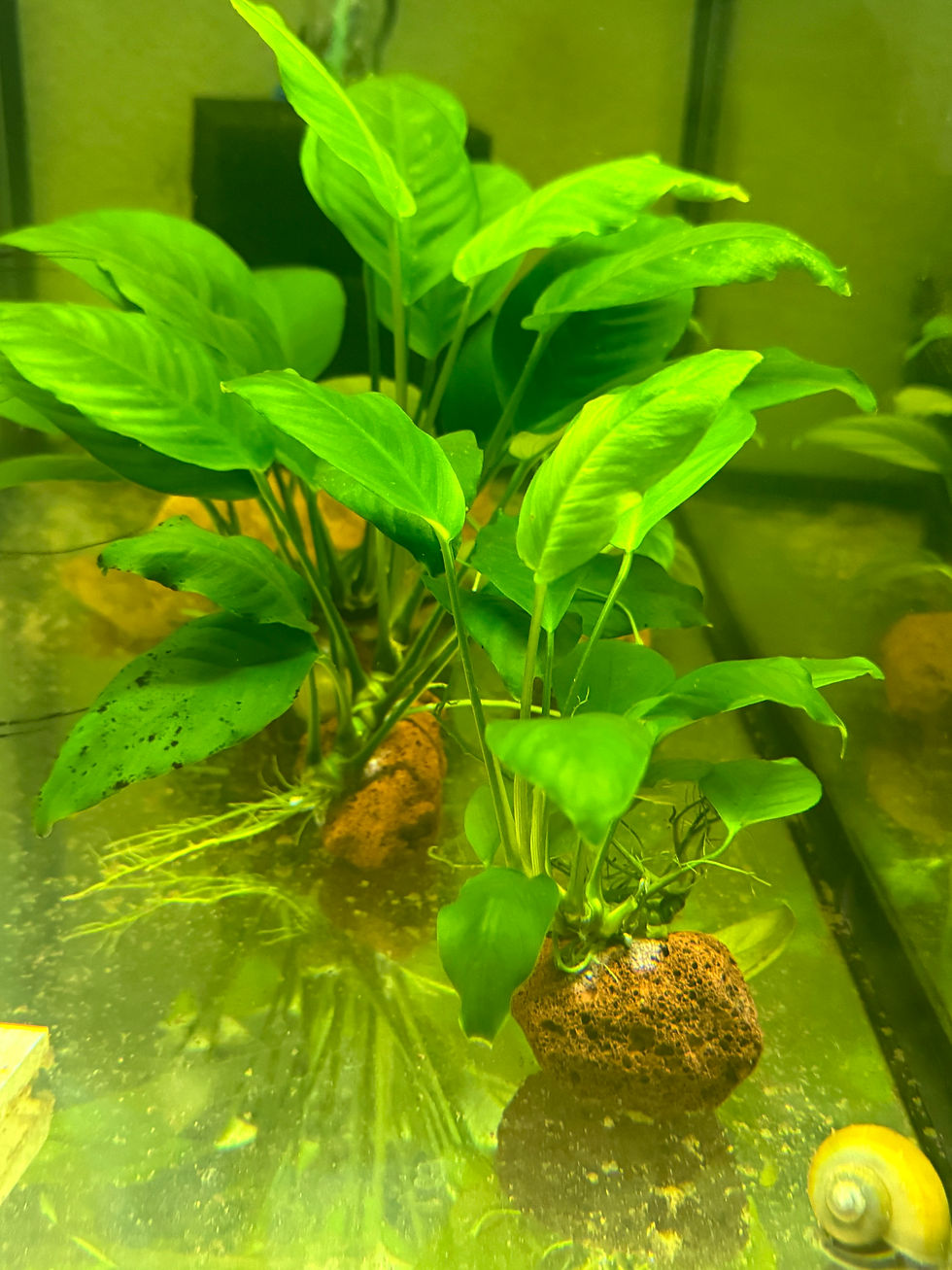top of page
Gold Ram
Price
$7.00
The gold ram (also called the gold ram cichlid or golden ram) is a beautiful freshwater fish, popular in aquariums for its bright yellow-gold coloration and peaceful personality. It’s a selectively bred color variant of the Mikrogeophagus ramirezi, also known as the German blue ram.
Here are some quick facts about the gold ram fish:
- Size: Usually around 2–3 inches (5–7.5 cm) in length.
- Temperament: Peaceful and shy, can be kept in community tanks with other non-aggressive species.
- Water parameters: Warm water, around 78–85°F (25–29°C), with soft and slightly acidic water preferred.
- Tank setup: They love planted tanks with hiding spots and calm waters.
- Diet: Omnivorous — they’ll enjoy high-quality flakes, pellets, frozen foods, and live foods like brine shrimp or bloodworms.
They’re a little sensitive to water quality, so stable, clean conditions are important for them to thrive.
Quantity
Care Guide
Tank Requirements
- Tank Size: Minimum 20 gallons for a pair
- Water Temperature: 78°F to 85°F (25.5°C to 29°C)
- pH Level: 6.0–7.5 (prefers slightly acidic)
- Water Hardness: Soft to moderately hard (3–12 dGH)
- Filtration: Strong biological filtration but with a gentle current
- Aquascaping: Sand or fine substrate, with plenty of hiding places (plants, caves, driftwood)
Water Quality
- German Blue Rams are very sensitive to poor water quality!
- Maintain:
- Ammonia and nitrites: 0 ppm
- Nitrates: Below 20 ppm
- Weekly 30–50% water changes are crucial.
Feeding
- Diet: Omnivorous — thrives on a varied, high-protein diet
- Good foods include:
- Daphnia, brine shrimp
- High-quality micro pellets for cichlids
- Occasional vegetable matter like spirulina flakes
- Feed 2–3 small meals a day.
Tankmates
- Best kept with peaceful community fish that enjoy warm, soft water:
- Cardinal tetras
- Rummy nose tetras
- Corydoras catfish (warm-tolerant varieties)
- Hatchetfish
- Plecos (small species like bristlenose)
- Avoid: Fin-nippers, aggressive fish, and large, boisterous tankmates.
Breeding
- Rams form monogamous pairs.
- They lay eggs on flat surfaces (like rocks or broad leaves).
- Both parents tend the eggs and fry.
- Breeding is best in separate tanks with slightly warmer water (around 82°F or 28°C) and very clean conditions.
Common Challenges
- Stress: A major cause of health problems; needs calm environments.
- Short lifespan: Even under the best care, 3–5 years is typical.
- Disease sensitivity: Prone to ich, parasites, and bacterial infections if water parameters fluctuate.
⸻
Bonus Tips for Happy German Blue Rams
- Provide lots of hiding spots — driftwood, caves, or dense plants.
- Keep their tank mates peaceful and calm — loud or nippy fish stress them out.
- Soft, warm water is key — if your tap water is hard, you might need RO (reverse osmosis) water.
- Watch their behavior — a healthy Ram will be curious, colorful, and actively exploring.
You may also like
bottom of page




















